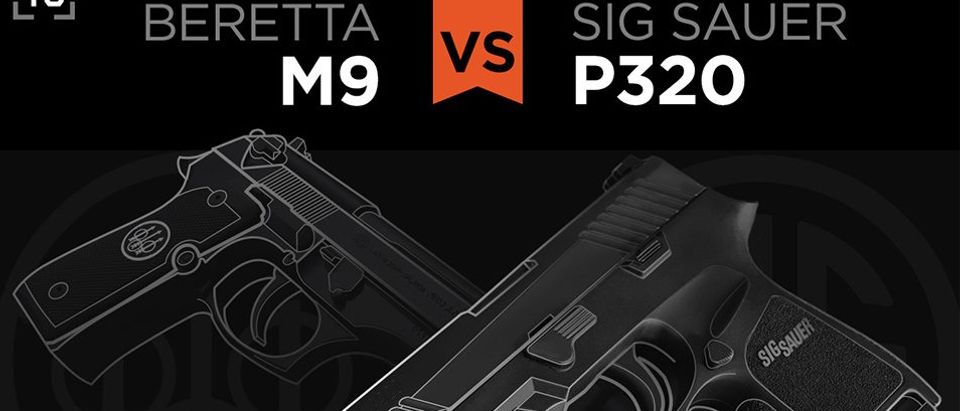By Lauren Malm, TacticalGear.com
In January, the U.S. Army ended its search for a replacement to the standard-issue Beretta M9, the sidearm that’s been used by soldiers for more than 35 years. By winning the Modular Handgun System Competition (MHS), Sig Sauer secured an estimated $580 million contract to produce a variant of the P320, the M17, a decision Glock is now appealing.
While both firearms have hardcore fans, the M9 is becoming outdated—often criticized for its large grip, terrible safety and questionable reliability. The P320 is accurate, reliable and a modular weapon. But is the benefit over the M9 worth the money the military is pouring into it? The Army received criticism for taking almost a decade to replace a firearm that is rarely used, leading many to question the necessity to make the change.
What really sets these two pistols apart is the ability to reconfigure the M17. The core of the gun is housed in a serialized unit that detaches from the frame in seconds. This interchangeable trigger group allows changes in caliber, pistol size and grip. With more women entering the military and the push for women in combat roles, the option to choose a smaller grip is an important distinction. This modular design also makes it easier to replace broken parts and adapt to different assignments.
Despite the 9mm being the current military standard, there has been concern it does not provide enough stopping power. With the ability to be chambered in different calibers, the M17 would eliminate this concern if the Army would allow a cartridge choice for different units.
Other benefits to the P320? As a striker-fired handgun, the P320 has a consistent trigger pull and a short reset. The M9 is a hammer-fired handgun which some shooters have difficulty mastering, often pulling their first shot. Also adding to its list of pros, the P320 is threaded for suppressor attachment, allowing the Army the option for customization.
Many are saying Sig Sauer owes its victory to the price point. The P320 comes in at $207 a unit, more than $50 cheaper than the M9. With many of the standard-issue M9s nearing the end of their lifecycle, new firearms would need to be purchased anyway, making the hundreds of millions spent on MHS and the contract well worth it. However, if the Army selected the updated Beretta M9A3, submitted before the MHS competition in an attempt to keep their contract, the Army could have saved on magazines and training. Looking at the whole picture, overall cost could be fairly comparable.
It’s clear why the P320 walked away the winner of the MHS. It’s simply a great handgun, and its improvements over the M9 are long overdue for the Army. Still not sold? This infographic from TacticalGear.com strips these pistols down to their basic functionalities to compare them side-by-side.

Thanks to Tactical Gear for this post. Click here to visit TacticalGear.com.
Make sure to get Tactical Gear’s newsletter – Click here to TG’s newsletter delivered to your inbox.


